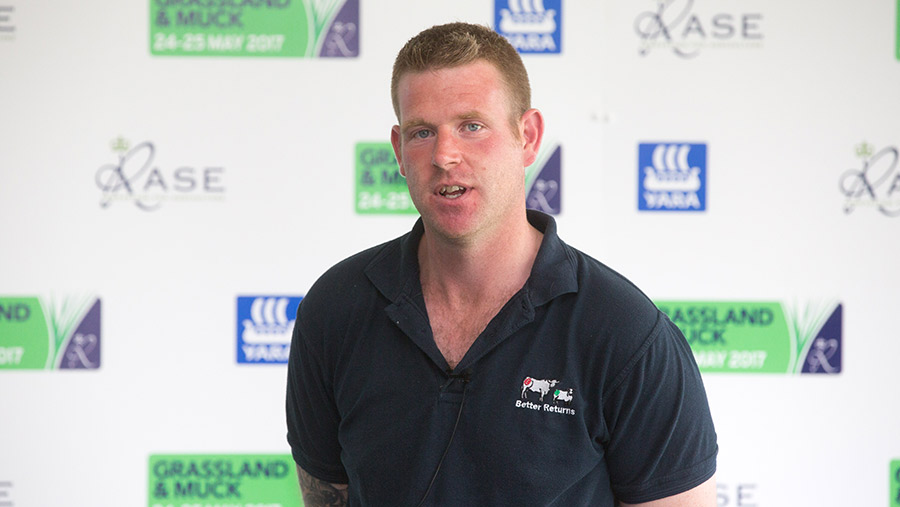Beef farm ups grass production with switch to rotational grazing
Rotational grazing is allowing a Somerset beef farm to grow more grass and to be flexible in its approach to managing grass shortages and surpluses.
Eighteen months ago, Matt House joined Bowden Farms as a manager and overhauled the arable and set-stocked beef system with support from an AHDB’s Beef from Grass Project.
The 202ha farm had been stocked with 26 beef cows, 60 12-month-old steers and heifers and 60ha of cereals were grown.
See also: How recording and rotational grazing can lift lamb weight gains
“The farm was understocked and the arable side of the business was unproductive,” Mr House told farmers attending an AHDB seminar at Grassland & Muck 2017.
The farm is rented by the de Pelet family from a family trust and they agreed with his vision to cease arable production and establish an Aberdeen Angus-cross suckler herd.
Cow type and grazing management
Central to that system was cow type and grazing management. Mr House opted for Aberdeen Angus-sired heifers out of New Zealand Friesian cross Jersey cows.
“They have good fertility, they are good on their feed and they can be outside for 365 days of the year,’’ said Mr House.
The farm is now stocked with 121 spring-calving cows and the target is to increase numbers to 300 by 2020.
Mr House changed the grazing system with advice from Charlie Morgan of Grassmaster, one of two consultants supporting him through the AHDB project.
Grassland was split into 28 paddocks averaging 2ha, with cows moved to fresh grass every three days when supply falls below 1,500kg DM/ha.
Cow training
Mr House admits the cows needed training to move between paddocks but they have now got used to it and follow him on the bike.
The benefit is they are making better use of home-grown feed. “We are growing a lot more grass than we did when we were set stocking – at least a third – and we are utilising a lot more of what we grow.”
He measures grass weekly and uses the information to inform grazing decisions. Mowing and baling is used to manipulate the wedge. “It supply is over 3,000kg DM/ha we will cut that paddock to keep it in line with the wedge,” Mr House explains.

Matt House says his farm is now making better use of home-grown feed
No longer closing paddocks for silage
Mr House no longer closes paddocks for silage production, a change prompted by last year’s cold, wet spring.
“We didn’t have enough grass, the cattle were getting ahead of grazing, so Charlie advised me to go out and graze the silage fields.”
Although Mr House was at first unconvinced, he did so and was rewarded with sufficient grass for silage when conditions warmed up.
“Our mindset now is that we don’t shut up silage fields. And if the grass supply gets ahead of the cows we cut it as soon as it needs it. It is important to get that grass off and get the paddock back into the rotation because it is beneficial to have young grass.”
